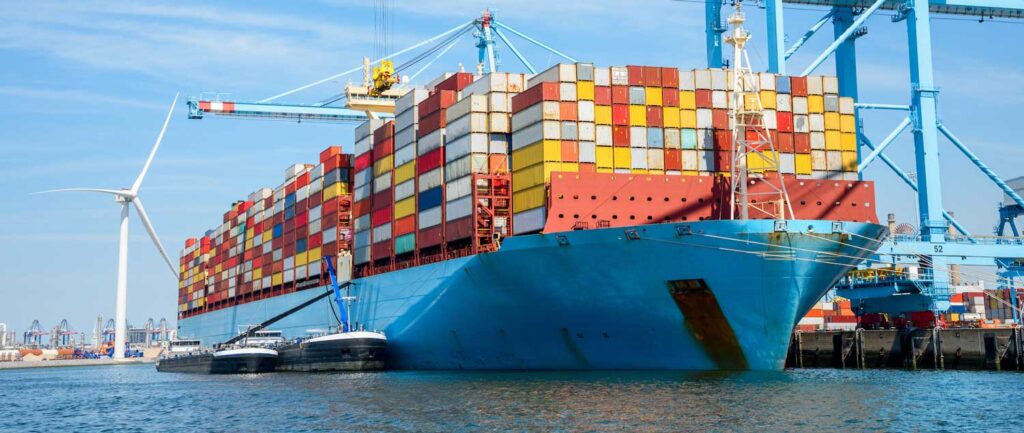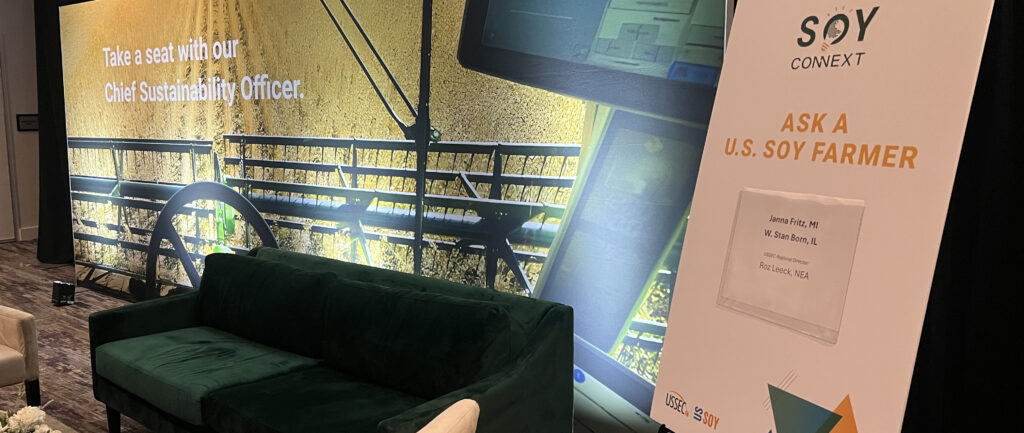In June, Worthington farmer and American Soybean Association Vice President Bill Gordon visited Indonesia on a trade team mission with the U.S. Soybean Export Council (USSEC).
“Right now, with what’s going on with China, increasing our exports to other markets is a top priority,” Gordon said. “Finding and growing other markets is huge right now.”
A few months later, a dozen buyers from Indonesia returned the gesture by traveling to Gordon’s farm as part of a tour of Nobles County and southern Minnesota. Most of the Indonesian delegation was representing the country’s layer and feed industry.
“As far as trade teams go, this is as good as it gets,” says Minnesota Soybean’s Director of Market Development Kim Nill, who helped coordinate the trip. “Minnesota has long been a supplier of soybeans for Indonesia. By using checkoff funds, we hope this visit leads to increased purchases of U.S. soybeans.”
After Bill and his wife, Dawn, greeted the delegation at the family farm in Worthington, the tour started at the New Vision Co-Op fertilizer plant in Brewster. The group then traveled to nearby Reading to visit a Pioneer sales office, where they met with sales rep Dusty Neugebauer, a farmer who serves on the Nobles County Corn and Soybean Growers board. Minnesota State Senator and Senate Ag Chair Bill Weber also attended the visit.

“We’re trying to show our friends from Indonesia our farming infrastructure and help better position our products,” says Peter Mishek, a soybean promotion export consultant.
Indonesia is the world’s fourth largest consumer of U.S. soybeans. More than 95 percent of Indonesia’s soybean imports goes toward the production of Tempe, a traditional staple food. The U.S. exported more than 2.7 million metric tons of whole soybeans, soy meal and oil to Indonesia in 2017/2018, equating to 40 percent of the market share.
“We value our relationship with the United States,” says Achmad Dawami, who’s the head of Japfa’s commercial poultry division. “This has been a very important visit toward understanding more about United States agriculture.”
The trade team also visited soybean test plots and learned more about soybean production practices from Minnesota Soybean Director of Research David Kee. To cap the day, the Indonesian buyers feasted on local steak and corn under a tent at the Gordon’s farm.
“This has been a very interesting tour for the group,” says Budi Tangendjaja, a technical consultant for the U.S. Soybean Export Council (USSEC). “Many in the group here have never been to the U.S., and now they saw firsthand how how U.S. farmers manage their products. The hope is they bring this information back home with them.”
On Friday morning, the group visited Minnesota Soybean’s headquarters in Mankato. University of Minnesota Extension Agronomist Seth Naeve delivered a presentation on essential amino acids.
“I’m anticipating that we’re going to have a high protein this year. Based on the delayed planting, we will have a very different looking crop,” Naeve says. “On average, our protein levels are going to be quite high.”
Before their departure, each trade team participant was given a copy of the 2018-2019 Soybean Export Quality Report, which reinforces the low foreign material quality of Minnesota soybeans.
“I think we had a great visit with the Indonesian team. They were able to pack a lot into a couple days. Now, hopefully they came away with a better understanding of agriculture practices here in Minnesota,” Gordon says. “When they think U.S. soybeans, we want them to think of Minnesota.”






